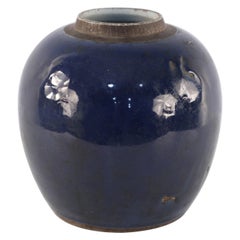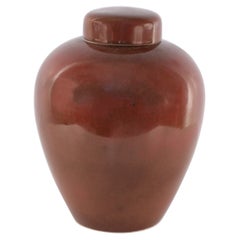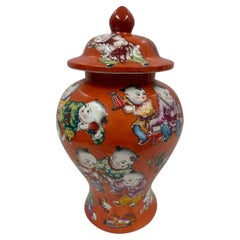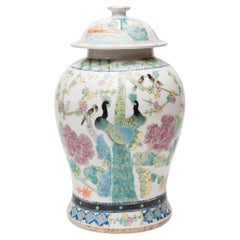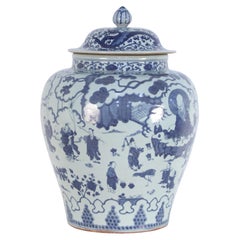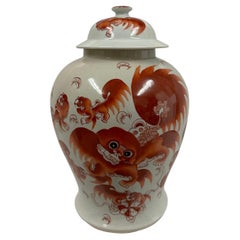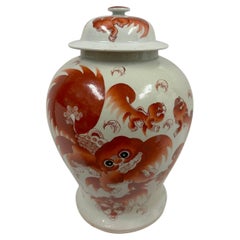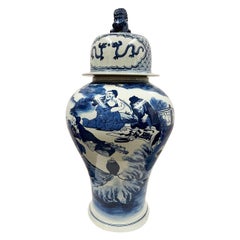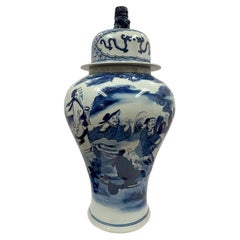Export Chinese Ginger Jars
20th Century Chinese Chinese Export Jars
Ceramic
20th Century Chinese Chinese Export Jars
Porcelain
Mid-20th Century Chinese Chinese Export Jars
Porcelain
Early 20th Century Chinese Chinese Export Jars
Porcelain
20th Century Chinese Chinese Export Jars
Porcelain
Early 20th Century Chinese Chinese Export Jars
Porcelain
Early 20th Century Chinese Chinese Export Jars
Porcelain
Mid-20th Century Chinese Chinese Export Jars
Porcelain
Mid-20th Century Chinese Chinese Export Jars
Porcelain
Antique 19th Century Chinese Chinese Export Jars
Porcelain
20th Century Chinese Chinese Export Jars
Porcelain
20th Century Chinese Chinese Export Jars
Porcelain
Mid-20th Century Chinese Chinese Export Jars
Ceramic
Mid-20th Century Chinese Chinese Export Jars
Ceramic
Early 20th Century Chinese Chinese Export Jars
Porcelain
Early 20th Century Chinese Chinese Export Jars
Enamel
Mid-20th Century Chinese Chinese Export Jars
Brass
20th Century Chinese Chinese Export Jars
Porcelain
Mid-20th Century Chinese Chinese Export Jars
Ceramic
21st Century and Contemporary Chinese Chinese Export Jars
Porcelain
Antique Late 19th Century Chinese Chinese Export Jars
Porcelain
Antique Early 19th Century Chinese Chinese Export Jars
Pottery
20th Century Chinese Chinese Export Jars
Porcelain
Late 20th Century Chinese Chinese Export Jars
Ceramic
Mid-20th Century Japanese Chinese Export Jars
Ceramic
Antique 19th Century Chinese Chinese Export Table Lamps
Bronze
Antique Late 19th Century Chinese Chinese Export Ceramics
Ceramic
Antique 19th Century Chinese Chinese Export Ceramics
Porcelain
Antique 19th Century Chinese Chinese Export Ceramics
Porcelain
21st Century and Contemporary Chinese Chinese Export Ceramics
Porcelain
Mid-20th Century Chinese Chinese Export Ceramics
Pottery
Antique 19th Century Chinese Chinese Export Ceramics
Porcelain
20th Century Chinese Chinese Export Table Lamps
Porcelain
Early 20th Century Chinese Chinese Export Metalwork
Metal
Late 20th Century Chinese Chinese Export Ceramics
Ceramic
Vintage 1960s Chinese Chinese Export Table Lamps
Porcelain, Wood
Antique Early 19th Century Chinese Chinese Export Ceramics
Porcelain
21st Century and Contemporary Chinese Chinese Export Table Lamps
Ceramic
Early 20th Century Chinese Chinese Export Ceramics
Porcelain
Late 20th Century American Chinese Export Table Lamps
Ceramic, Wood
Early 20th Century Chinese Chinese Export Table Lamps
Bronze
20th Century Chinese Chinese Export Antiquities
Porcelain
Mid-20th Century Chinese Chinese Export Table Lamps
Ceramic, Wood
Antique 1760s French Chinese Export Table Lamps
Porcelain
Antique 19th Century Unknown Chinese Export Table Lamps
Porcelain, Wood
20th Century Chinese Chinese Export Vases
Porcelain
Mid-20th Century Chinese Chinese Export Vases
Porcelain
Early 20th Century Chinese Chinese Export Ceramics
Ceramic
20th Century Unknown Chinese Export Table Lamps
Porcelain
Antique Early 18th Century Chinese Chinese Export Porcelain
Porcelain
Antique 19th Century Chinese Chinese Export Vases
Porcelain
Antique 19th Century Chinese Chinese Export Vases
Porcelain
Early 20th Century Chinese Chinese Export Ceramics
Porcelain
Antique 1890s Chinese Chinese Export Porcelain
Porcelain
Early 20th Century Chinese Chinese Export Ceramics
Porcelain
Antique 19th Century Chinese Chinese Export Antiquities
Porcelain
Early 20th Century Chinese Chinese Export Ceramics
Porcelain
20th Century Chinese Chinese Export Vases
Porcelain
20th Century Chinese Chinese Export Vases
Porcelain
Antique Early 1900s Chinese Chinese Export Ceramics
Porcelain
- 1
Export Chinese Ginger Jars For Sale on 1stDibs
How Much are Export Chinese Ginger Jars?
A Close Look at Chinese-export Furniture
Expanded trade between Europe and East Asia, starting in the 16th century, led to a booming market for exported goods, particularly furniture. This was bolstered by the establishment of the Dutch and English East India Companies at the beginning of the 17th century. From folding screens and chairs to lacquer tables and silver, Chinese Export furniture was in demand and regularly copied and imitated, leading to styles like chinoiserie and Chinese Chippendale.
The expansion of exporting that had strengthened the arts during the Ming dynasty continued into the Qing dynasty era — Chinese designers made many furniture pieces specifically for export, resulting in distinctive designs that mixed traditional techniques with forms appealing to foreign buyers. For instance, cabinetmakers in Canton (modern-day Guangzhou) were prolific in crafting hardwood furniture for export in European styles that involved the expert joinery techniques of Chinese furniture. Designs for Chinese Export porcelain, cabinets, decorative objects and other furniture were often more ornately adorned than they would be for a local audience, such as with mother-of-pearl overlays or surfaces featuring lavish pictorial scenes or gold on black motifs. Some were even commissioned by wealthy European families to be adorned with their coat of arms.
Because lacquer furniture was especially prized, and the resin used to create it was difficult to import as it would harden during the long voyage, artisans in China and Japan exported numerous lacquer pieces. Long before lacquer made its way to Japan, the Chinese treated the material differently. They used it to create smooth, glossy surfaces, but also for carving, an art that began in the 12th century and is exclusively Chinese. These pieces are called cinnabar lacquer after the powdered mercury sulfide (cinnabar) employed to produce their characteristic red hue. A popular form for export was a compact cabinet with drawers, usually displayed on a small table. Undecorated furniture built in Europe was also shipped to China to be lacquered. The international exchange of design would influence furniture into the 19th century and later, informing styles such as Art Deco and Art Nouveau.
Find a collection of antique Chinese Export tables, beds, cupboards, table lamps and more furniture on 1stDibs.
 Lotus GallerySeptember 23, 2020
Lotus GallerySeptember 23, 2020Chinese ginger jars were originally made as utilitarian vessels used to store various herbs and spices. Today, they are almost exclusively decorative objects.
 Lotus GallerySeptember 23, 2020
Lotus GallerySeptember 23, 2020A Chinese ginger jar should be fairly compact in size, with a rounded, globular or ovoid body, high shoulders, a wide circular mouth, short neck, and a fitted cover.
 Lotus GallerySeptember 23, 2020
Lotus GallerySeptember 23, 2020Chinese ginger jars are defined by their round, compact shape, wide mouth, short neck, and fitted cover.
